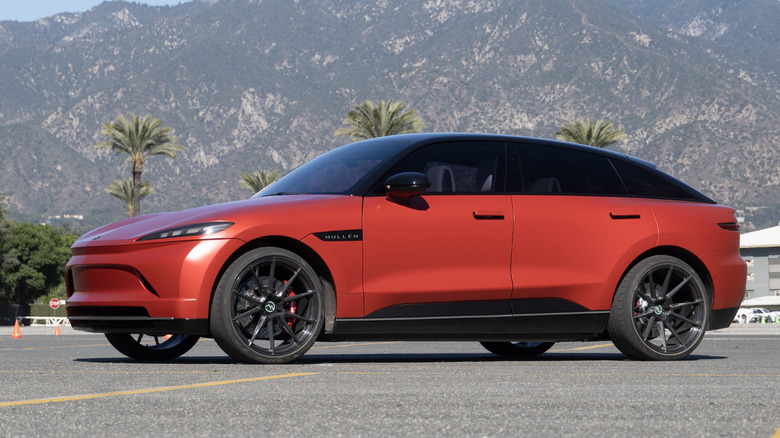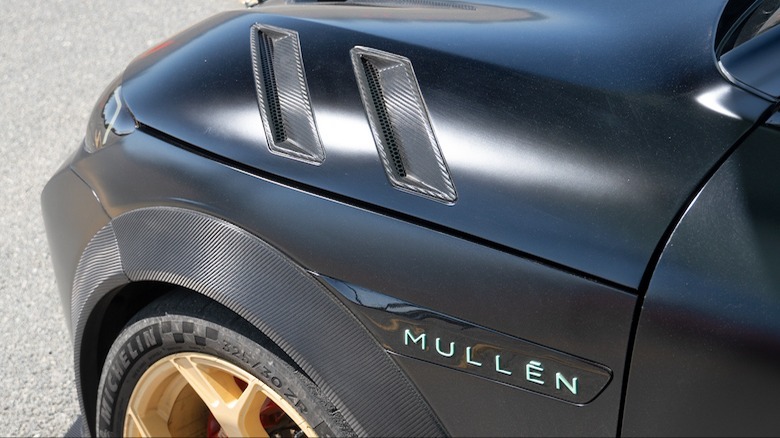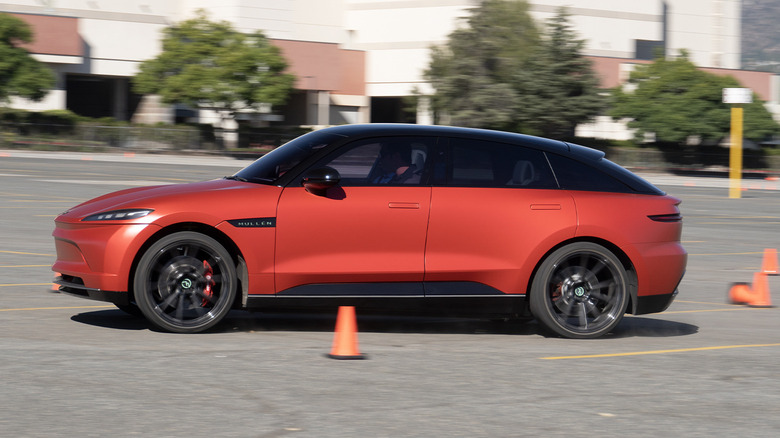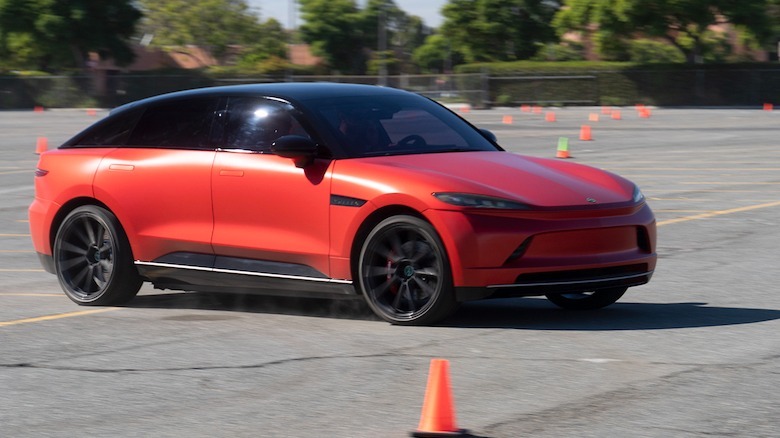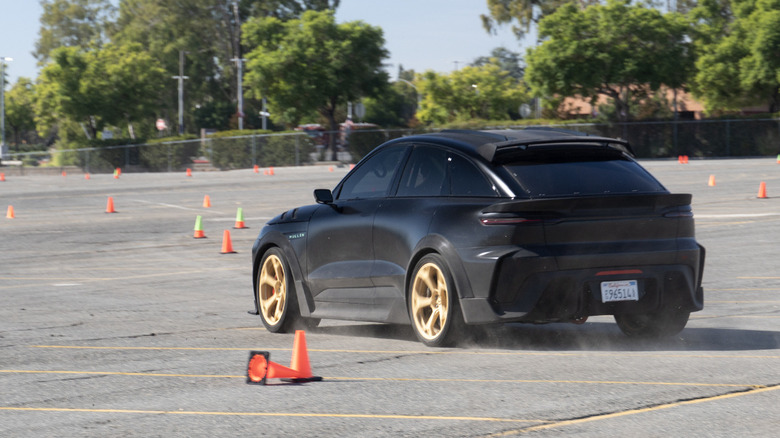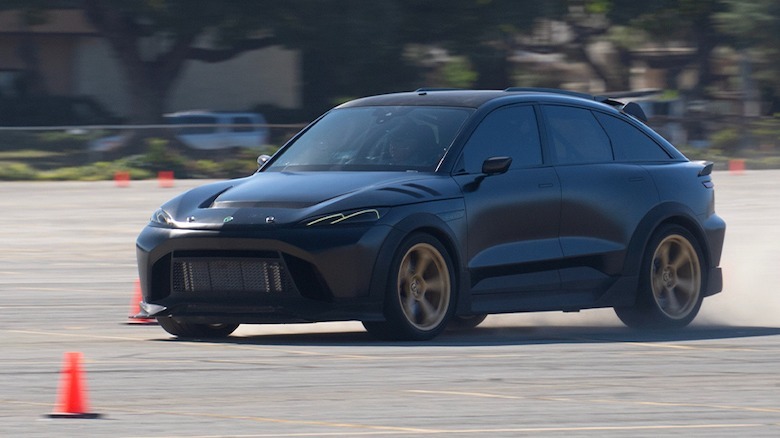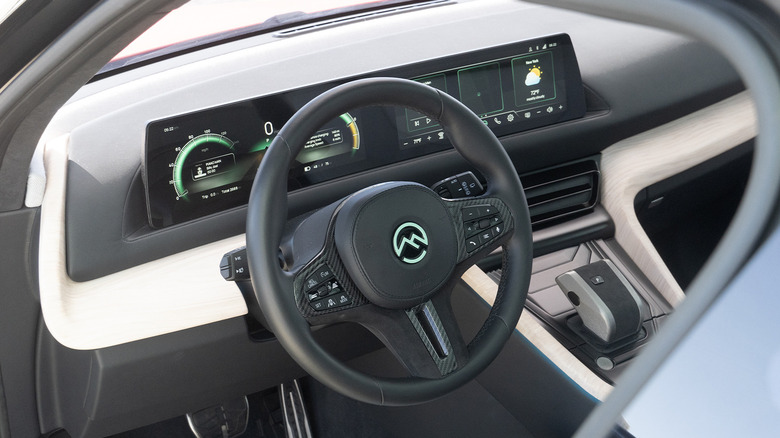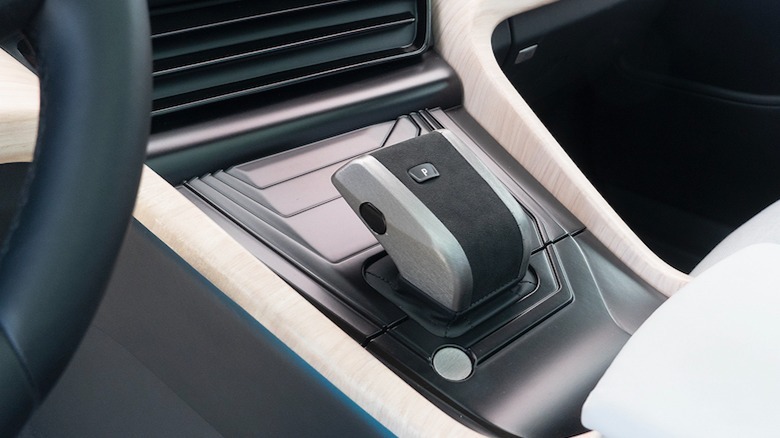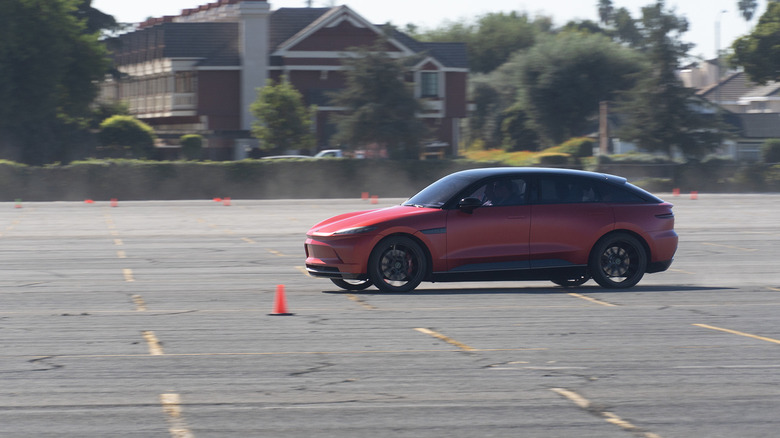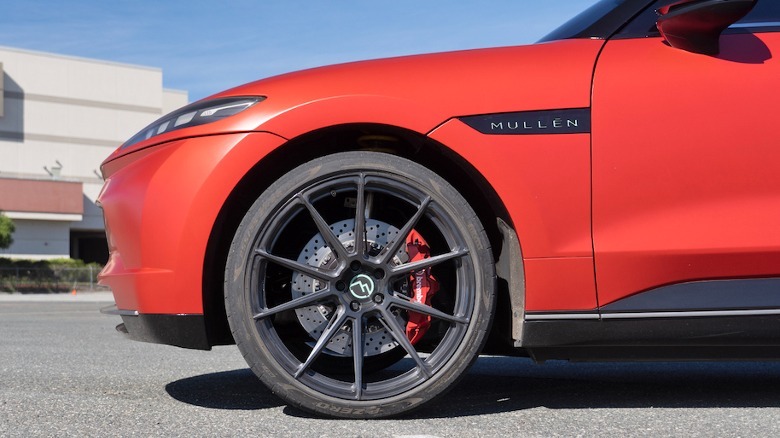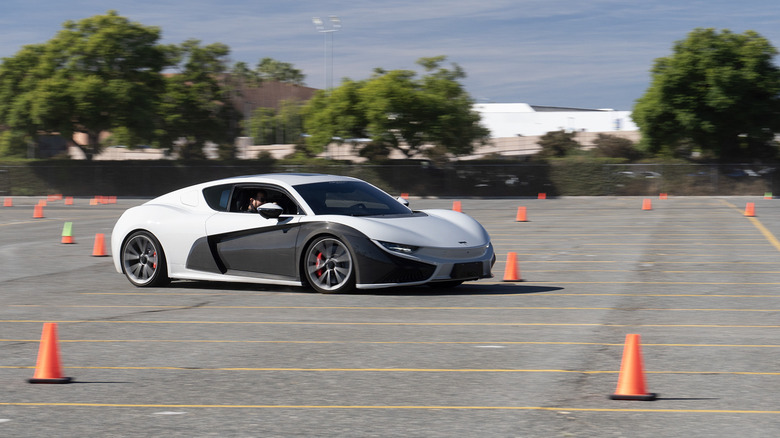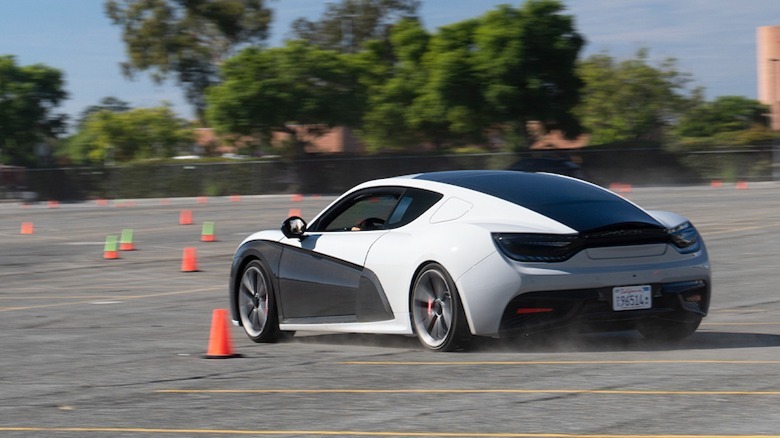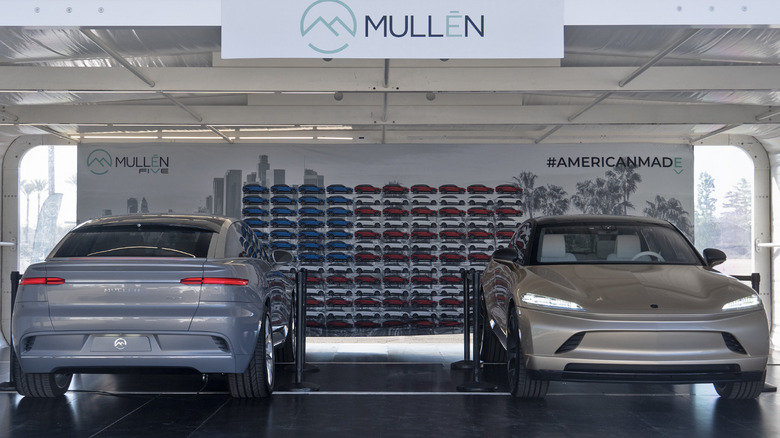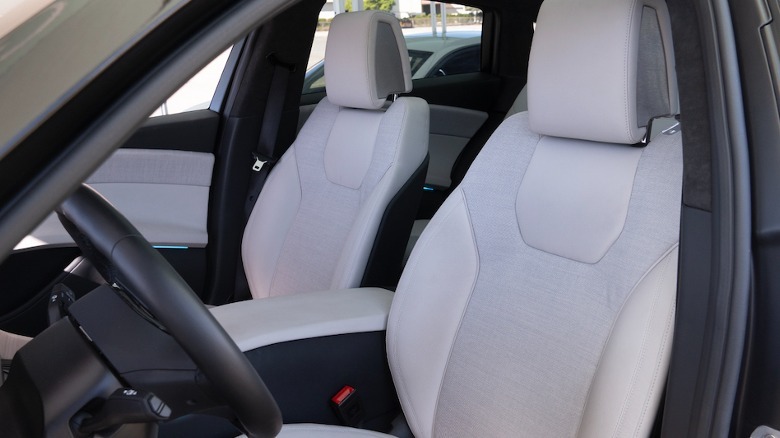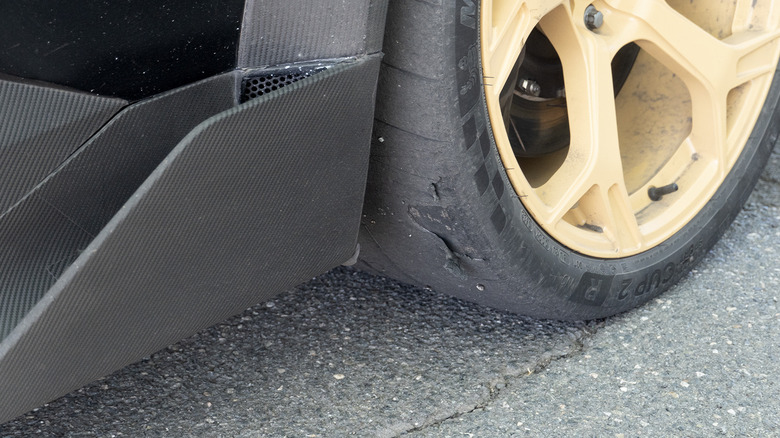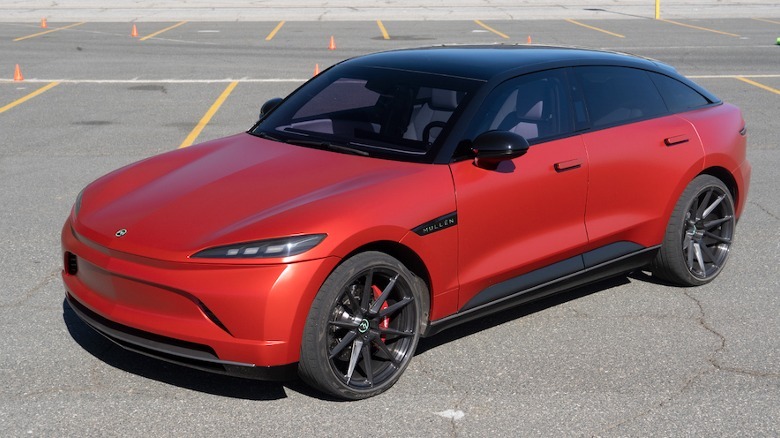Mullen FIVE First Drive: Controversial EV Brings Big Surprises And Bigger Questions
Short-selling Tesla fanboys love to overstate rumors of Mullen Automotive's demise. But all conspiracy theories aside, anyone not following the automotive industry with a fine-tooth comb has likely never even heard of Mullen, a new-ish EV company based in Southern California with intentions set on beginning production of a consumer Tesla competitor this coming year dubbed the Mullen FIVE.
"New-ish" refers to the fact that Mullen's founder, David Michery, started the company in 2014 after founding Mullen Technologies in 2012. Much of the following decade included news about rebadged Chinese electric cars, and promises of an eventual production crossover built and sold in America. Somewhere along the way, Mullen pivoted heavily towards the commercial vehicle market, and even acquired the much-maligned Bollinger Motors in 2022.
The FIVE long remained little more than a pair of concept cars after the official debut at the 2021 Los Angeles Auto Show. At that time, crisp lines and clean packaging set the FIVE apart from many of the boxy electric crossovers unveiled at almost the exact same time. But now, after bailing on a press drive last year, Mullen invited me to actually drive the FIVE on a makeshift autocross course at a large parking lot near Santa Anita Park just east of Los Angeles.
Same same but different
Michery will readily and unashamedly admit the FIVE's styling borrows heavily from Volkswagen AG's Porsche Cayenne and Lamborghini Urus siblings. Then throw in hints of Koenigsegg headlights at the front, a bit of Lucid Air in the roofline, and simple smooth side surfaces reminiscent of the Kia EV6. But the design strikes a cohesive balance between sporty and stylish, even if the red and black exterior that showed up at Santa Anita doesn't serve the form quite fully.
In white with aluminum trim—leaning into the Lucid side, clearly—the FIVE looks much better. On the inside, the dash has evolved from the first two concept cars, with a larger panoramic touchscreen and a unique shifter that lends a functional futurist atmosphere to the otherwise unadorned surfaces. Without instruction, actually selecting a gear takes a couple of tries before becoming intuitive, the door handles less so to my hands, anyway.
Mullen always promised avant garde tech, though, along with competitive range, potent performance, early adoption of solid state batteries, and impressive pricing. The day at Santa Anita, however, was more about the driving experience—not on the clock racing, but rather a look at how powertrain and suspension engineering can cohesively create confidence in an all-new EV from a new-ish EV company.
The opposite of a typical automaker's M.O.
In this case, Mullen decided to switch up the modus operandi of most automakers: Instead of starting with the least powerful variant, I first hopped into the passenger seat of the FIVE's most hardcore RS package. With a full carbon aerodynamics package, 21-inch wheels shod in Michelin Pilot Sport Cup 2 R tires, a roll cage, harnesses, and race seats, the RS looks every bit the business—if not anywhere near a production vehicle consumers might actually one day buy.
Mullen's test driver made sure I strapped in properly, then rolled out for a slow build up to autocross pace. In the late-morning sun, tires need a bit of time to warm up on the gritty parking lot surface. By only a few turns in, though, I noticed the cornering g forces pick up noticeably. My stomach never felt jumpy, or anywhere near that old roller-coasters sensation so many high-performance EVs invariably create, but even while sitting shotgun, I perceived a taut and twitchy spirit as the RS rocketed through the parking lot.
Then we slid through a drifty hairpin, all four wheels screaming, and even caught a bit of air on seemingly flat ground—we must be seriously moving, I realized, even if the sensation of speed seemed less extreme than expected. When we pulled back into the makeshift Mullen village, a right rear Michelin looked absolutely shredded, too. But before I could pepper anyone too much about the RS, the base FIVE opened up for my turn behind the wheel.
Pre-production for now
I slipped into the driver's seat and pulled the door closed with that peculiar handle. Before I tried to adjust the seat and steering wheel, a Mullen rep advised me that neither moved easily. Up close, the panoramic touchscreen looked to only function for speed and state of charge, with most of the apps and widgets presumably programmed as imagery only.
To the hand, each touchpoint material nailed a much higher quality level than I expected from a non-concept model, including the textile seats, center console, and shifter. I pushed the square knob's side button and nudged to the rear, then yanked harder until the dash gauge showed a small "D" for drive. Those first few seconds lent the scene a decidedly pre-production sentiment, so I figured I should take my first moments of driving easy, too.
A first drive in the FIVE
Discretion being the better part of valor flew right out the window, though. On Pirelli P-Zero tires that tend towards oiliness more than the stickier Michelins, the FIVE coaxed me into confidence quite quickly. The grainy asphalt helped, maybe, and soon I reached full throttle in the first long-ish straight. Upon liftoff, mild regen shifted the FIVE's weight forward. I added some help from the Brembo brakes tentatively, then with more authority, but still the low-slung center of gravity never nose-dove.
Turning into a wide right-hander, light steering nonetheless communicated every pebble and penny on the parking lot surface, tires on the edge as I pushed hard through the quick corner. Maneuvering though a coned chicane and back into full power never upset the chassis, though I noticed a hint of traction control intervention that probably saved a bit of sliding. Through the hairpin, especially, traction control killed any hope of a drift—but this is a consumer model, not the RS racecar, after all.
Throughout the lap, the FIVE's suspension and chassis simply worked. And we know most EVs weigh literal tons, thanks to the batteries that power relatively compact electric motors capable of ungodly instantaneous torque. But when everything's fast, nothing is fast, so the illusory challenge that engineers face involves masking that heft to create inspired dynamics. In the case of the FIVE, the right word would probably be "flickable," at least through an autocross course in a horse-race track's parking lot.
Into the Qiantu, errr Mullen, GT
The freshly minted Mullen GT, meanwhile, immediately broadcasts remnants of EV design from a previous generation. First impressions inside the car, formerly known as the Qiantu DragonFLY, confirm the notion with thick 3K-weave carbon fiber, smaller screens, and a shift knob reminiscent of the BMW Z and Toyota Supra siblings. At low speeds, the car even emits an insectoid chirping noise.
Out onto the asphalt, the GT reveals a more purposeful presence: lower, tighter, and faster than the base FIVE by a long shot. Picking the right line became the name of the game, as my pace approached nearer to the RS drive. But somewhat counterintuitively, the GT also feels heavier than the FIVE. How could that be, I wondered.
A second look at the FIVE
Next I stopped to snag photos and check out Mullen's display booths, where placards boasted the RS's 1,100 horsepower, 200-mph top speed, 1.9-second sprint to 60, and two-speed gearbox. The GT, meanwhile, receives an electronically limited top speed of 125 miles an hour, with a 0-60 time of 4.2 seconds and dual-motor four-wheel-drive. The numbers seemed disconnected from my real-world experiences, but then again I never drove the RS.
For the production FIVE, Mullen aims for a range of 325 miles, a 0-60 time of 3.2 seconds, and a top speed of 155 miles per hour. Those figures sound competitive if the promised starting pricetag of $55,000 holds up for the final form, which will supposedly begin deliveries in 2024 for customers who placed an early $100 pre-order.
I wandered back over to the autocross section after wrapping up my photo session, and then finagled my way into another go in the FIVE. This time, I received the white and aluminum car—apparently an earlier prototype than the red one. I planned to drive at average pace this lap, hoping to replicate daily driving as closely as possible.
But going more slowly also afforded me the chance to take a closer look at my environs. Little details stood out: the panoramic roof looked closer to plexi than glass, panels out of raw carbon fiber behind the door card pocket, trim taped on rather than clipped or bolted. This FIVE still drove lighter than expected, but maybe we now know why.
How close is the Mullen FIVE to production?
So the question, then, is how close the Mullen FIVEs I drove might actually be to eventual production vehicles. If the Tennessee plants begins assembly in the coming year-plus, will the magical driving dynamics survive through to dealer floors? Based on the quantity of people on hand at Santa Anita to check out some of Mullen's commercial vehicles, the question may end up moot.
Just over two years have passed since the FIVE concept's official auto show debut, a perfectly reasonable timeframe for most automakers to begin approaching mass production. But Mullen clearly doesn't fit under the umbrella of "most automakers." The FIVE will arrive when it arrives, or not. In the meantime, anyone short-selling stocks and ranting in the comments on YouTube conspiracy theory videos can take a deep dive into the finances and business deals that go into building all-new cars and companies.
After driving the FIVE, I hope that Mullen can prove the haters wrong and bring an impressive EV alternative to market springs anew. And if the solid-state battery promises play out, all the better for all of us.
